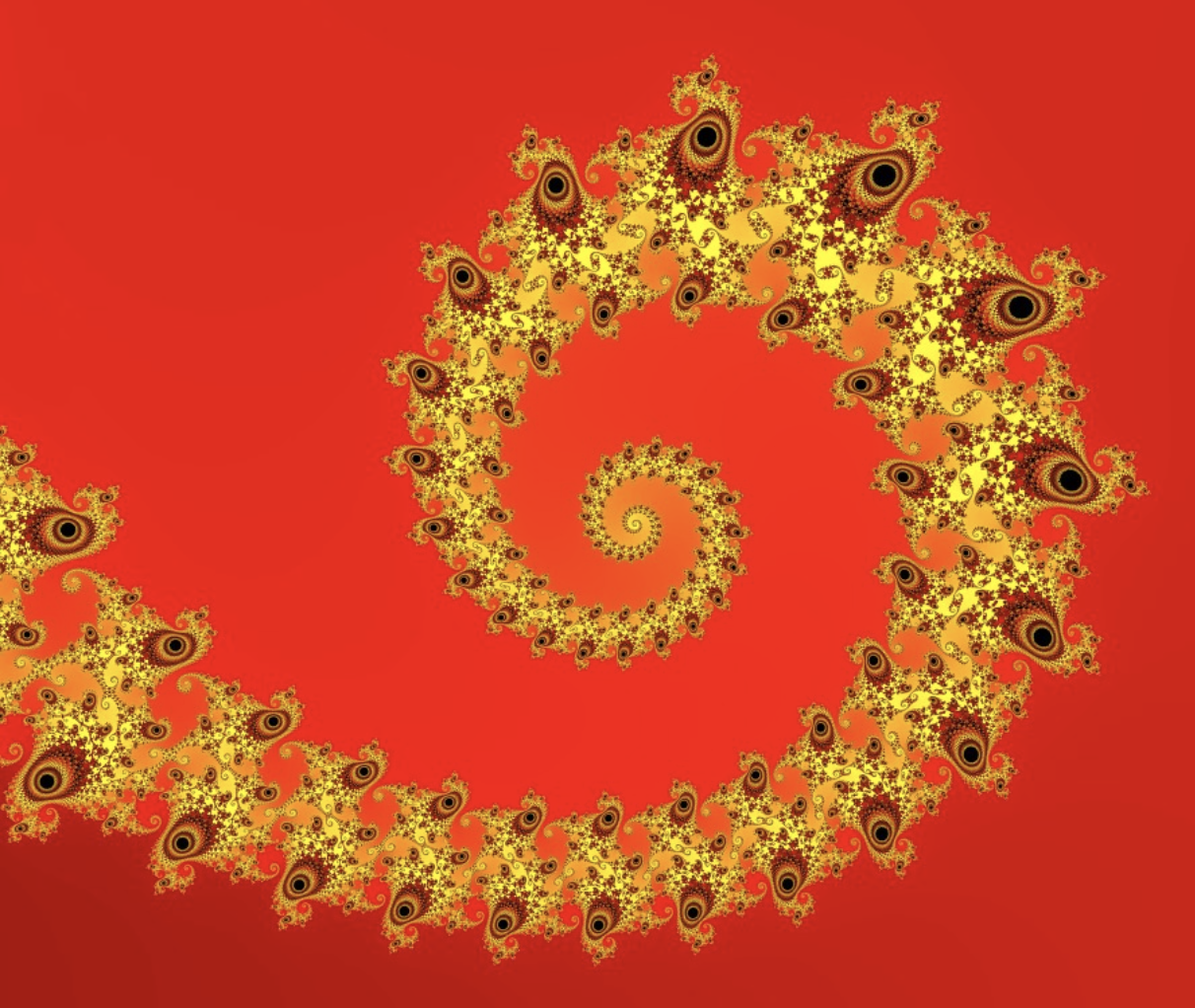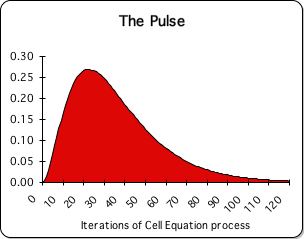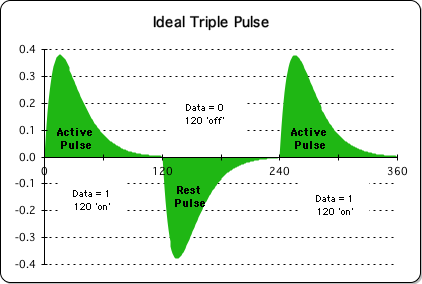Section Headings
- Attention's Fractal Patterns
- Nature of the Answer: Definitive Predictions vs. Pattern Identification
- Matter’s Feedback Loops corrupt Predictability
Attention's Fractal Patterns
Many claim that Fractals are the mathematics of Life
Seeing the beautiful vegetal patterns generated by Mandelbrot’s famous equation, many have made the claim that fractals reveal the secret of Life in terms of self-replicating patterns. I agree. However, there are also significant differences between the two systems, i.e. mathematical and living, which should be acknowledged – not ignored.
For instance, fractalized boundary lines -> Life’s
Life has her own mathematics, which is based in the Living Algorithm. Both Mandelbrot’s Fractal Equation and Life’s Living Algorithm are Reflexive Equations, i.e. based in feedback loops. Due to this affinity, they share a similar logic. We have shown how this so-called Fractal Logic is more appropriate for living systems than is the absolutist set-based logic of Matter. In particular, fractalized boundary lines disable the absolute truths that many attribute to verbal constructs.
Examine Mathematics to see where Fractal Metaphor breaks down
However, always another ‘however’, we must remember that the relationship between living systems and fractals is metaphorical in nature, as are all abstractions. As such the fit between model and reality is not perfect, never is. Let’s examine the mathematics of the two equations to see where the fractal metaphor breaks down with regards Life. In so doing, we will discover where the fractal metaphor falls short when it comes to living systems.
First Mandelbrot vs. Living Algorithm
Let us compare and contrast Mandelbrot’s Fractal Equation with Attention’s Living Algorithm. Although they are both Reflexive (recursive) Equations, the first is deterministic and static, while the second is open and dynamic. Quite a difference! Let’s check out the details and the significance.
Mandelbrot’s Closed Equation = Small differences à Diametrically Opposed Results: No lines
Mandelbrot’s Reflexive Equations (the ones that generated the fractal patterns) are closed – no external input. Despite being closed to the outside, small differences in the initial conditions, i.e. the constant, can still yield diametrically opposed results – limit or no limit – the equivalent of distinct destination or lost – directed or aimless. No precise lines identify which points are inside and outside of the destination set.
Fractals Deterministic
Despite the complexity of the results (no demarcation lines), Mandelbrot’s fractal equations are still deterministic. The initial conditions always yield the exact same result. With no external input, there is no variation in the output.
Attention’s open LA = Not Deterministic
Even more complex is the reflexive equation that Attention employs to interact with data streams – the Living Algorithm (LA). While Mandelbrot’s fractal equations are closed, the LA is open to external input. With each iteration of the LA’s computational process, new information enters the system. As an open, reflexive equation, the LA is not deterministic. Due to this freedom, the LA’s mathematical system is qualitatively different from the absolute determinism of Material Equations or Mandelbrot’s Fractal Equations.
Material Equations & Fractal Equations = Deterministic
Living Algorithm = Not Deterministic
LA identifies Living Processes, not Material Events
Yet the LA defines the Living Realm of Attention. What does this freedom mean? If the mathematics can’t predict results, what’s the point? Not a specialist in material events, the LA instead identifies processes and their features. This is appropriate as even Life’s identity is based in process, rather than content, as a subsequent section illustrates.
Colorful Fractal Patterns due to Speed of approach
Rather than illuminating a process, Mandelbrot’s equation reveals the results of an event, i.e. which constant is chosen for the iterative sequence. On the most basic level, the result is binary – limit or no limit (determinate or indeterminate). On a secondary level, the answer can also have a speed, the speed at which it approaches the limit. Some sequences are faster and others are slower. This variation accounts for the beautiful colors that are associated with the fractal patterns.

Questionable Utility of Fractal Patterns
Gorgeous but so what? Not sure. I don’t know if anyone has uncovered any real utility to these static fractal patterns. Certainly don’t hear much about it in the literature.
LA reveals 2 fractal Patterns that permeate Rhythms of Attention
In contrast, the Living Algorithm reveals two fractal patterns that dominate the rhythms of Attention. Rather than revealing static, deterministic results, as do the other two functions, the LA’s computational iterations identify two dynamic processes that are replicated on the very small time frames, e.g. the blinking of an eye, to the very large, e.g. an entire lifetime of mastery – one’s life work or even the Pulse of a Chinese dynasty.
The Pulse: Attention Span
The Pulse is one of the fractal patterns that we are referencing. Reflecting our Attention span, the Pulse is everywhere that there are living systems. It has some distinct characteristics that shape the form of our awareness, e.g. a distinct beginning and end; and a peak of awareness that is negatively impacted by interruptions – disproportionately so.

Triple Pulse: Sleep, Variation
The other mathematical pattern that replicates on the large and small levels is what we have chosen to call the Triple Pulse. This fractal process is related to our need for sleep, rest and variation in a theme.

Natural Selection takes advantage of Cycles: Posner & Dement
Natural selection has chosen to take advantage of both of these mathematical processes. Appropriate biological systems evolved to exploit the potentials of the LA’s mathematical system, i.e. Data Stream Dynamics (DSD). For example, both Posner’s Attention Model and Dement’s Opponent Process Model for the biology of sleep have a strong metaphoric relationship with the mathematical processes of DSD. Both of these models are also intimately related to a complex of biological systems in many species.
Nature of the Answer: Definitive Predictions vs. Pattern Identification
Summary: Mandelbrot vs. LA & Fractal Logic vs Set Logic
In summary, there is a huge difference between our two Reflexive Functions. Mandelbrot’s Fractal Equation reveals the deterministic results of particular events. The Living Algorithm reveals the fuzzy shape of living processes associated with Attention. There is even a bigger difference between our two types of logic. Matter’s Set-Based Logic is Absolutist, true or false in all cases. Fractal Logic is particular, with truth evaluated on a case-by-case basis. Further, Fractal Logic is based in replicating patterns. The LA’s Pulse and Triple Pulse are examples of these replicating patterns as applied to Attention.
Significance?
What is the significance of these differences?
Logic of System determines Nature of Answer
The logic of the system determines the nature of the answer. Matter’s Set Logic enables precise predictions of specific results. The Fractal Logic of recursive functions, e.g. Mandelbrot’s equation and Life’s Living Algorithm, enables the identification of patterns.
Foolish to apply Set Logic’s Precision to Attention
To apply Set Logic’s precision to Attention’s interactive feedback loops is misguided foolishness. Doomed to failure, this quest will never be able to reveal the underlying mechanisms that shape an organism’s intentional behavior. Rather than precise predictions, the best we can hope for is to identify the natural rhythms of Attention.
Matter’s Feedback Loops corrupt Predictability
Feedback can also be a problem for Matter. The scientific community has generated the impression that they can make precise predictions regarding all material behavior. Perhaps ideally, but not pragmatically. Set Logic is a great metaphor for Matter, but it falls apart at the edges, just like any other metaphor. Because of an obsession with a deterministic mindset (fuels a feeling of superiority and control), mathematicians and scientists tend to obscure the metaphoric nature of the relationship.
Where are the metaphoric flaws? There are a few significant caveats to the absolute predictability of Matter. First, precision is possible, but only if the initial conditions are clearly defined. Second, the number of factors must be small. Third, it helps if the system is closed. Let us provide some examples.
When objects are engaged in feedback loops, they are subject to the same type of predictive opacity that plagues living systems. For instance, it is virtually impossible to predict the location of a simple pool ball after multiple ricochets (one or two is easy). Why? The multiplication of angles with each bounce.
Due to the exorbitant time frame, the same difficulty holds true for astronomy. Because of the endlessness of planetary orbits, a third body (ever so small and in the wrong spot) could eventually (after millions of cycles) actually change a planet’s trajectory in significant ways. In other words, feedback loops, even though non-intentional, corrupt the projections of material behavior just as with living behavior.
When the number of factors are large and the system is open, prediction also becomes a problem. Modern technology is based upon limiting the number of variables that influence the outcome. This strategy works great inside a closed box, e.g. a car, computer or a rocket ship. Controllable variables in a closed system. Perfect.
However, the same deterministic mathematical strategy falls apart when analyzing the myriad variables of an open system. While scientists can send a rocket into outer space and predict its course for years to come, they are unable to make accurate long-term predictions regarding the weather. Despite all the closed box technology at their disposal, the best meteorologists can do is make short term predictions and identify long term weather patterns, e.g. cold in the winter and warm in the summer.
Due to intentionality, the individual behavior of living systems is even harder to predict than the weather – virtually impossible. However as with the weather, it is possible to identify rough patterns that govern our intentional behavior. And by exerting personal intentionality, we can ride the waves of these patterns to optimize our life experience.
So please don’t hold Attention to the same idealized predictive standards as Matter. Even objects are subject to the predictive opacity of feedback loops. Further myriad small factors in an open material system generate the same scientific confusion as in living systems. Add Intention into the mix and Pattern identification is the best we can hope for with Attention.